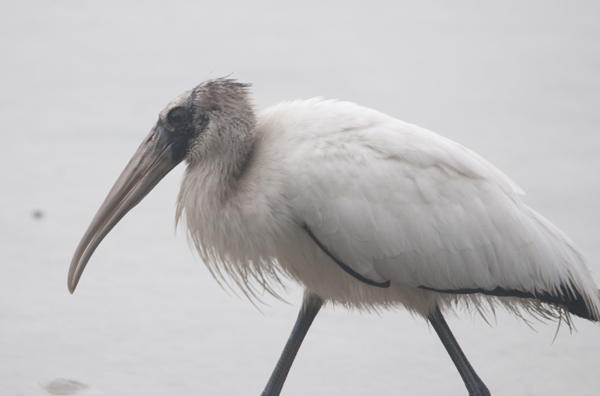
Wood Stork
Originally described by Carl Linnaeus in 1758, this stork likely evolved in tropical regions. The head and neck are bare of feathers and dark gray in color. The plumage is mostly white, with the exception of the tail and some of the wing feathers, which are black with a greenish-purplish sheen. The juvenile differs from the adult, with the former having a feathered head and a yellow bill, compared to the black adult bill. The sexes are similar.
The habitat of the wood stork can vary, but it must have a tropical or subtropical climate with fluctuating water levels. The 3 feet in diameter nest is found in trees, especially mangroves, usually surrounded by water or over water.
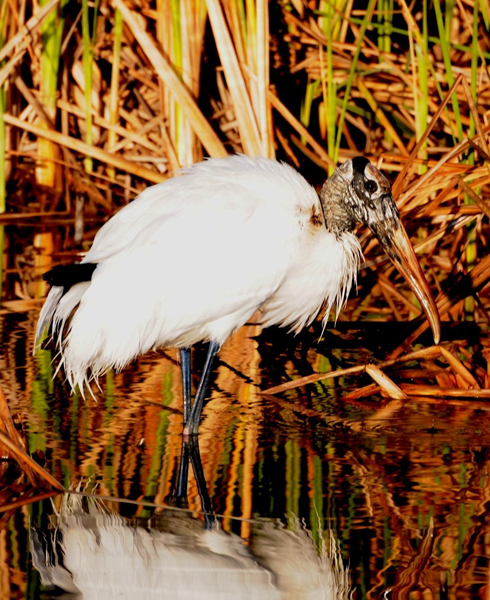
1. Adult
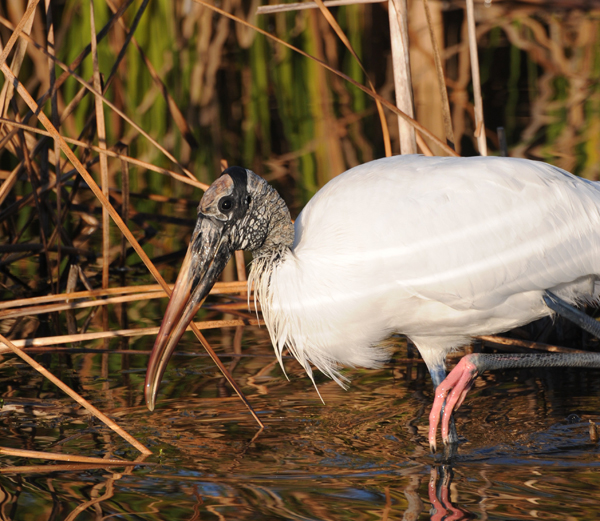
2. Pink feet.

3.I rescued this stork, he was not doing well.
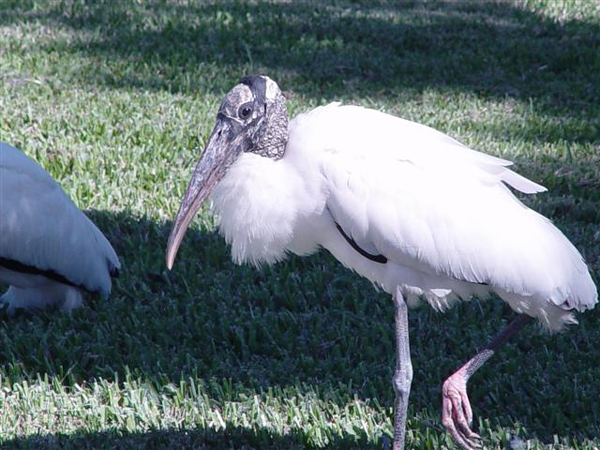
4. No fathers on neck.
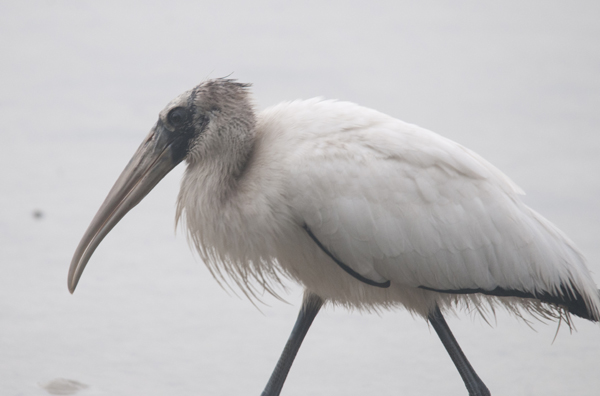
5. Feathers on neck!
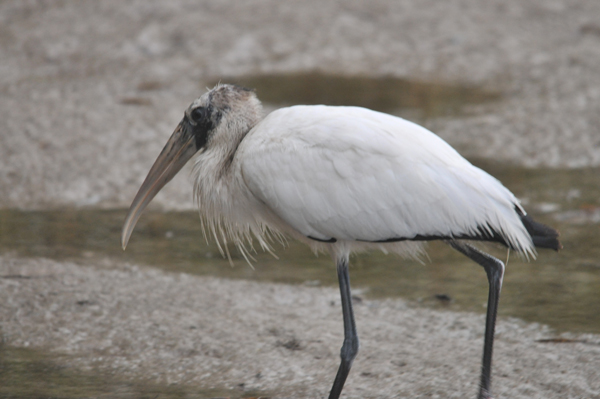
6.
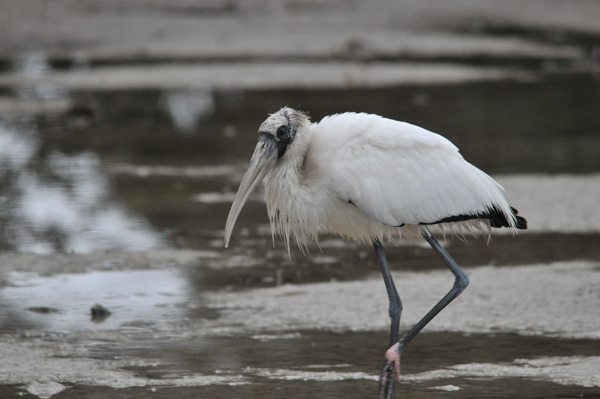
7.
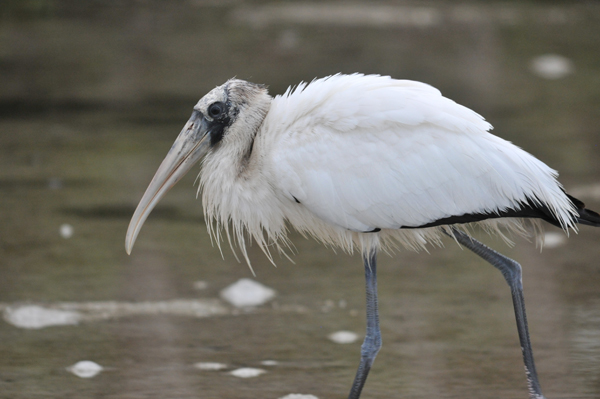
8. You can see the black feathers.

9.
